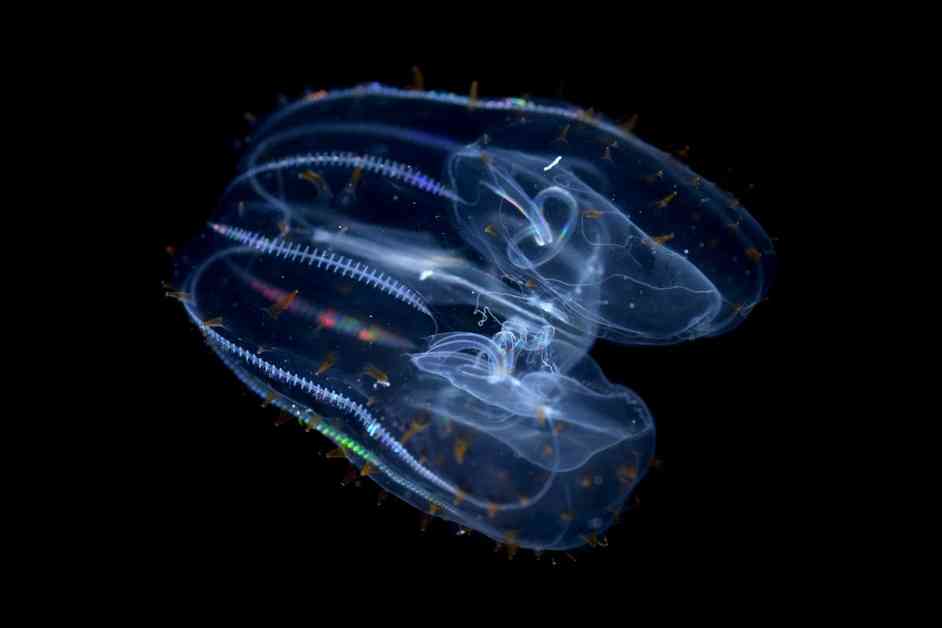Scientists have made a breakthrough in understanding how deep-sea comb jellies maintain their cell integrity under extreme pressure. These gelatinous creatures, known as ctenophores, have been a mystery due to their ability to survive in the crushing depths of the ocean.
Researchers have found that deep-sea ctenophores have high levels of a phospholipid called PPE, which helps keep their cell membranes stable under pressure. This discovery sheds light on why these creatures fall apart when brought to the surface, resembling the Wicked Witch of the West melting away.
Ctenophores are fascinating creatures with bodies like Jell-O that refract light into rainbows with their comb-legs. Despite their delicate appearance, they are efficient predators that feed on plankton, crustaceans, and small fish worldwide. Unlike jellyfish, ctenophores are a distinct group of marine animals.
To understand the resilience of deep-sea ctenophores, researchers collected samples from different depths of the ocean. They discovered that the deeper the ctenophore lives, the higher its PPE levels are. This cone-shaped phospholipid helps maintain the stability and flexibility of cell membranes under pressure.
The unique structure of PPE allows it to stay conical even under compression, unlike other phospholipids. However, when deep-sea ctenophores are brought to the surface, the reduction in pressure causes their cell membranes to deform and disintegrate. This explains why these creatures cannot survive outside their deep-sea habitat.
By genetically engineering Escherichia coli bacteria to have higher PPE levels, researchers observed that the bacteria performed well under pressure conditions. This finding has implications beyond deep-sea creatures and could potentially lead to new avenues for neurological treatments related to conditions like Alzheimer’s disease, where PPE levels play a crucial role.
The research findings have been hailed as groundbreaking by experts in the field. Understanding how deep-sea ctenophores adapt to extreme pressure not only provides insights into marine life but also offers potential benefits for human health research. This study highlights the interconnectedness of life forms across different environments and the importance of studying nature’s adaptations for scientific advancements.






